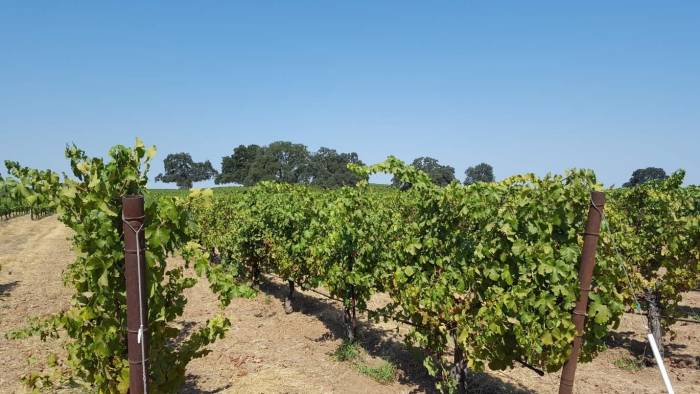
Lodi, California, once celebrated as Wine Region of the Year in 2015, is facing a crisis that is changing the landscape and future of its vineyards. This summer, the region’s usual green fields are giving way to yellow and brown patches, a sign of abandoned or bulldozed vineyards. For Sale signs now outnumber mailboxes along rural roads, and piles of dead vines await removal. The decline is visible to anyone driving through this historic wine country.
Grapegrowing in Lodi has deep roots, dating back more than a century. The area flourished during Prohibition when farmers shipped grapes east for home winemaking, which remained legal. Lodi’s rich soils and relatively cool climate compared to the rest of the San Joaquin Valley made it an ideal place for quality grape production. But after years of steady growth, the local wine industry is now struggling with an economic downturn that has hit hard and fast.
Kyle Collins of Allied Grapegrowers says that as recently as 2023, many vineyards were still being farmed in hopes of finding buyers for their grapes. Now, more growers are giving up each month. Jeff Bitter, president of Allied Grapegrowers, invited a closer look at the situation in June. Bitter stands out in the U.S. wine industry for his support of tariffs on foreign wine imports. He argues that tariffs could help level the playing field for American growers who compete with European wines supported by government subsidies.
“Tariffs have become a dirty word, but we think they can be an effective tool,” Bitter said. “We’re tired of hearing that importers will go out of business because of tariffs. That’s what’s happening to us right now.” He points out that when hundreds of thousands of tons of grapes go unpicked while similar amounts are imported as wine, it raises questions about priorities in the industry.
Bitter also challenges the idea that American and foreign wines are not interchangeable. He notes that during periods when imports were limited—such as during the COVID-19 pandemic—Americans turned to domestic wines without hesitation. Collins adds that much of the conversation about what’s best for the wine industry focuses on sommeliers, retailers, and restaurants—the “front of the house”—while ignoring growers and farmworkers who make up the “back of the house.”
The impact on Lodi’s community is clear. Restaurants and cafés are quieter than usual, and vineyard workers must travel farther for jobs, sometimes risking encounters with immigration authorities. Fourth-generation farmer Kyle Knoll harvested only 12 out of his 80 acres last year; this year he is farming 20 acres but may not harvest them all due to lack of contracts. Knoll says his land value has dropped by half in five years, and most buyers are interested in building homes rather than growing grapes.
“We never had any trouble selling grapes for 30 years,” Knoll said. “Now we can’t produce fruit at prices people want to pay.” He notes that buyers demand sustainable practices but are not willing to pay more for certified organic grapes.
In April, California Governor Gavin Newsom filed a lawsuit against federal tariffs on foreign wine imports—a move that angered some local growers like Knoll. The lawsuit failed, but it highlighted tensions between state policy and local needs.
With grape prices low and few alternatives available, some Lodi farmers are switching to crops like almonds or hay. Almonds require less labor but need specific weather conditions and plenty of water—resources that are increasingly scarce in California’s drought-prone regions. Hay is even less profitable but sometimes planted out of desperation.
At age 63, Knoll says he has no plans to switch crops but admits his family’s legacy may end with him and his brother, neither of whom have children to take over the farm.
The changes in Lodi reflect broader challenges facing American grapegrowers: competition from imports, shifting consumer preferences, and economic pressures that threaten family farms built over generations. As more vineyards disappear from Lodi’s landscape, local growers hope for policies—including tariffs—that might give them a fighting chance to survive.

Dining and Cooking